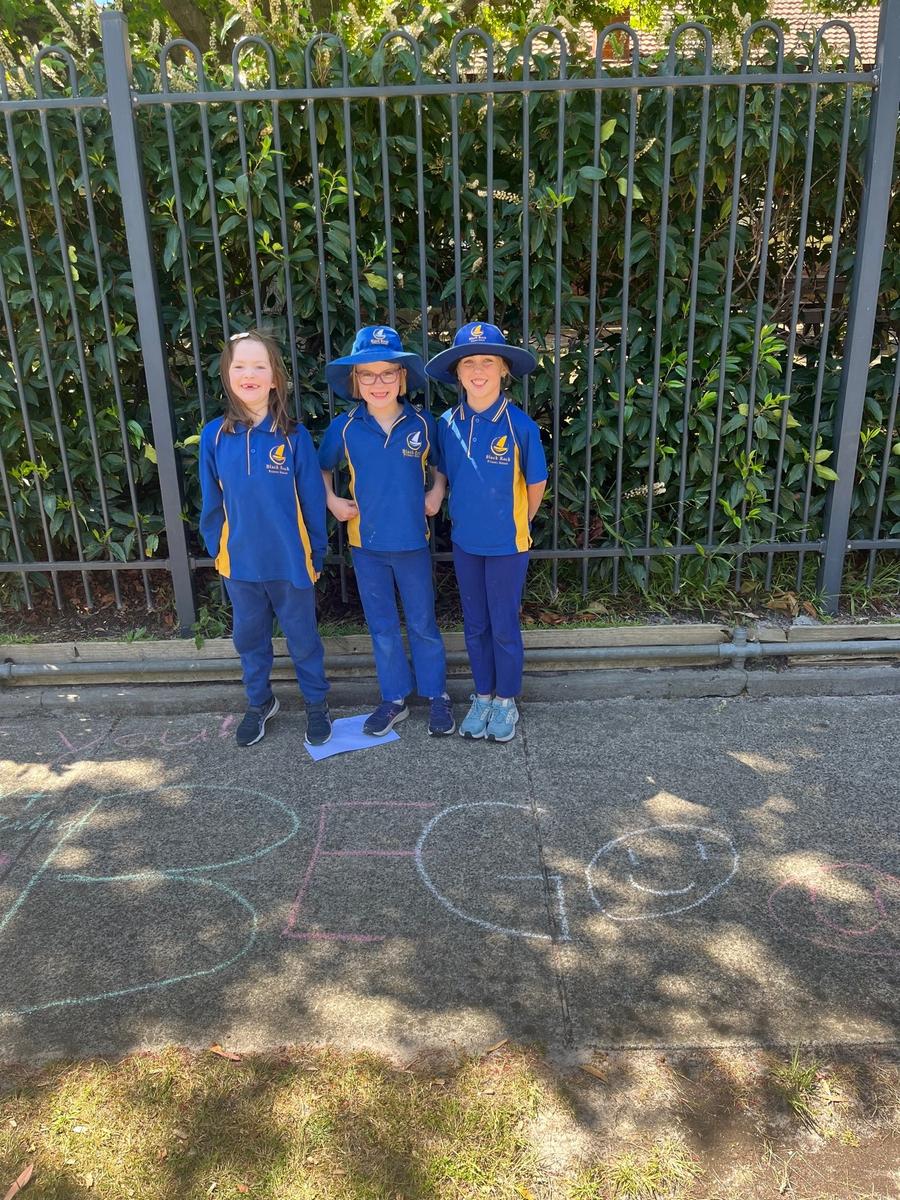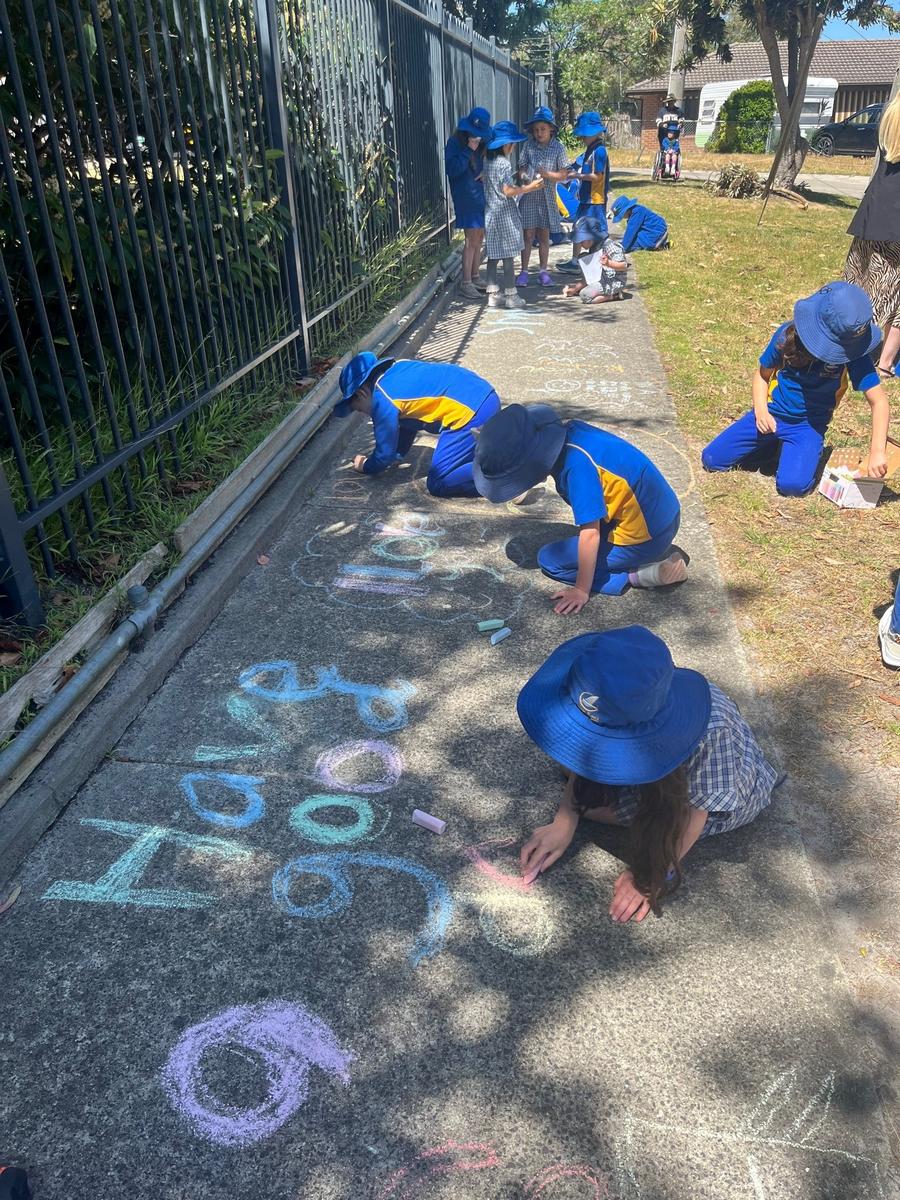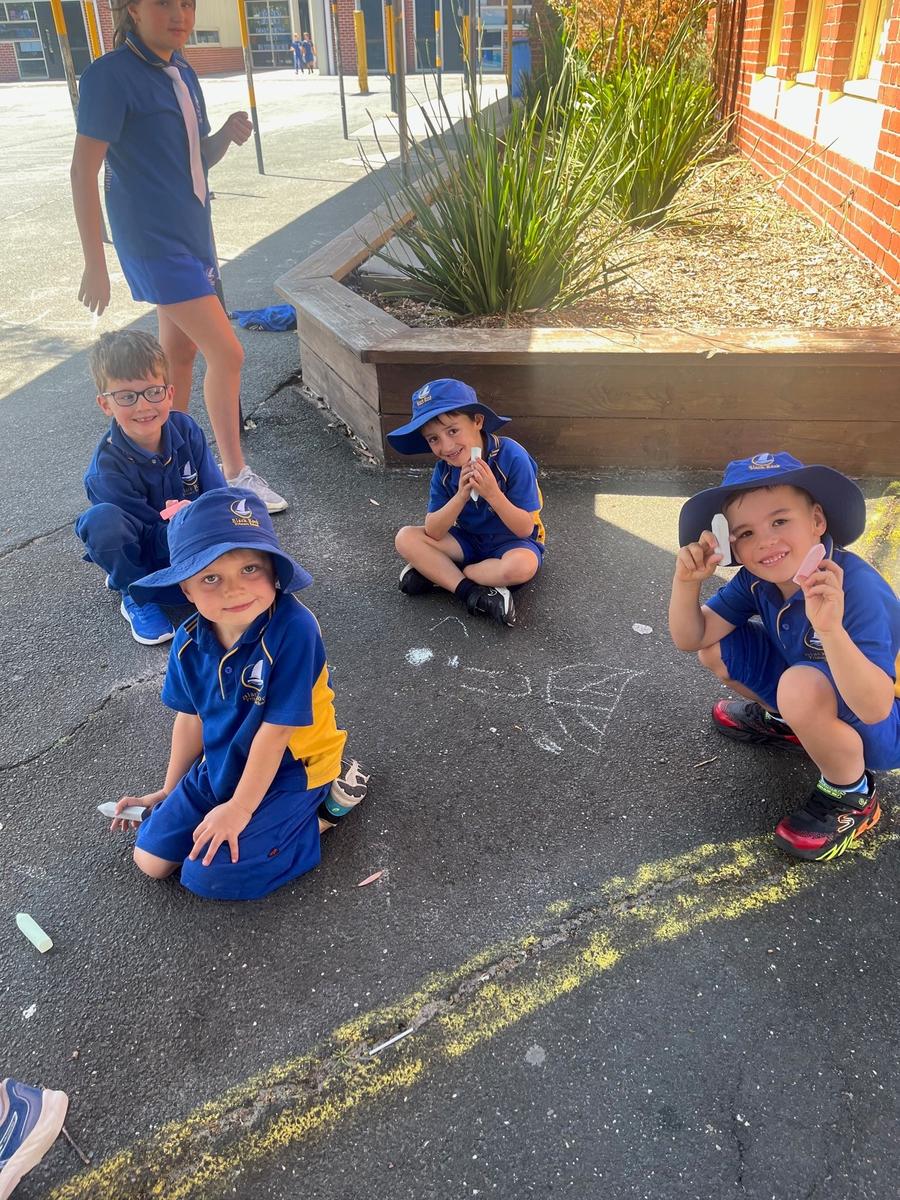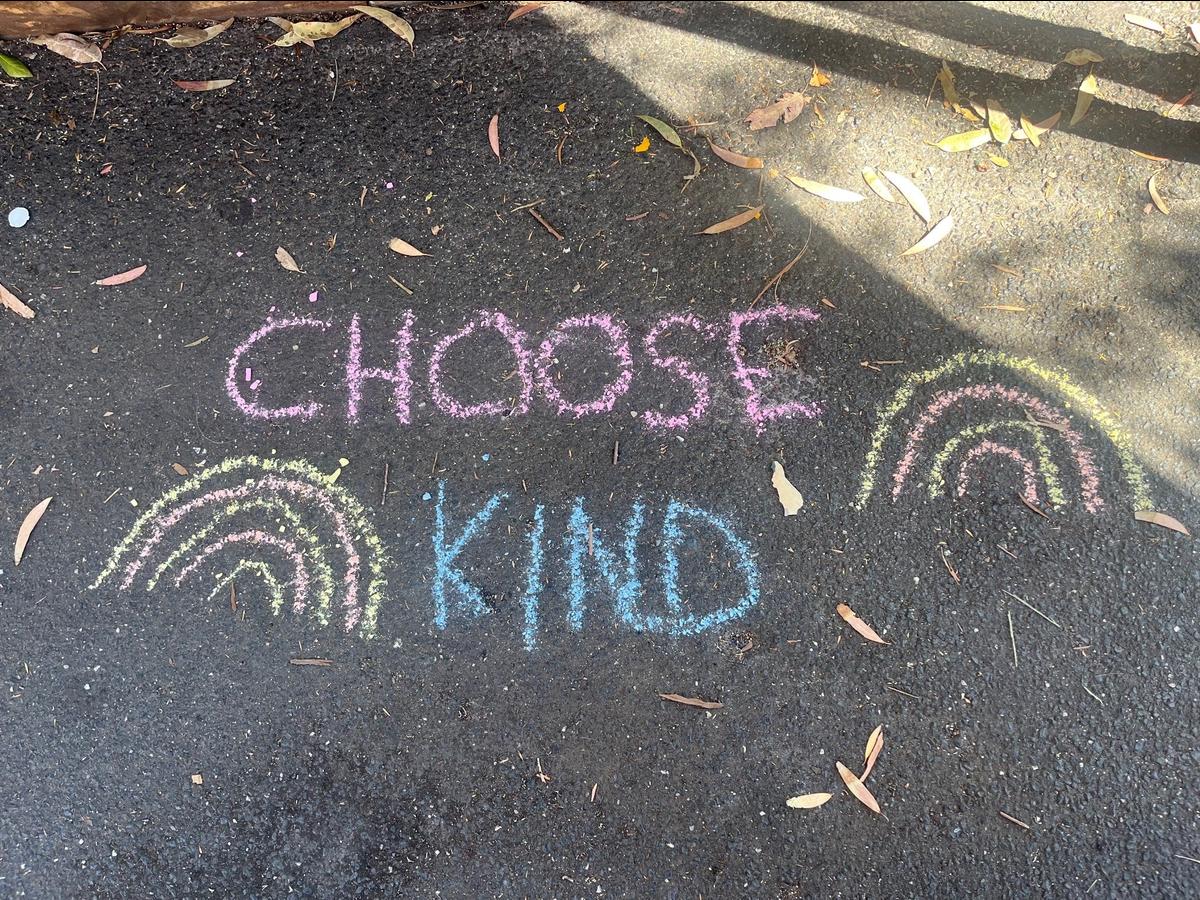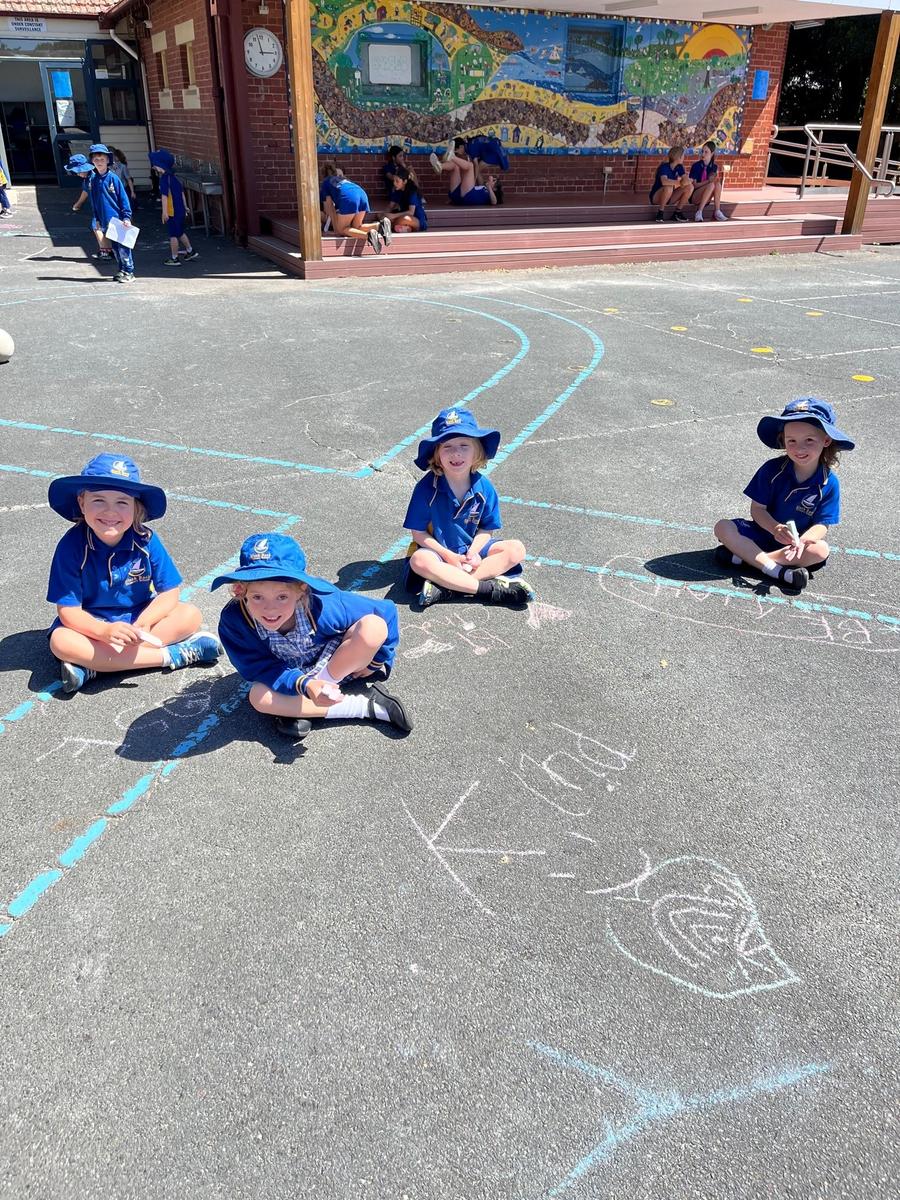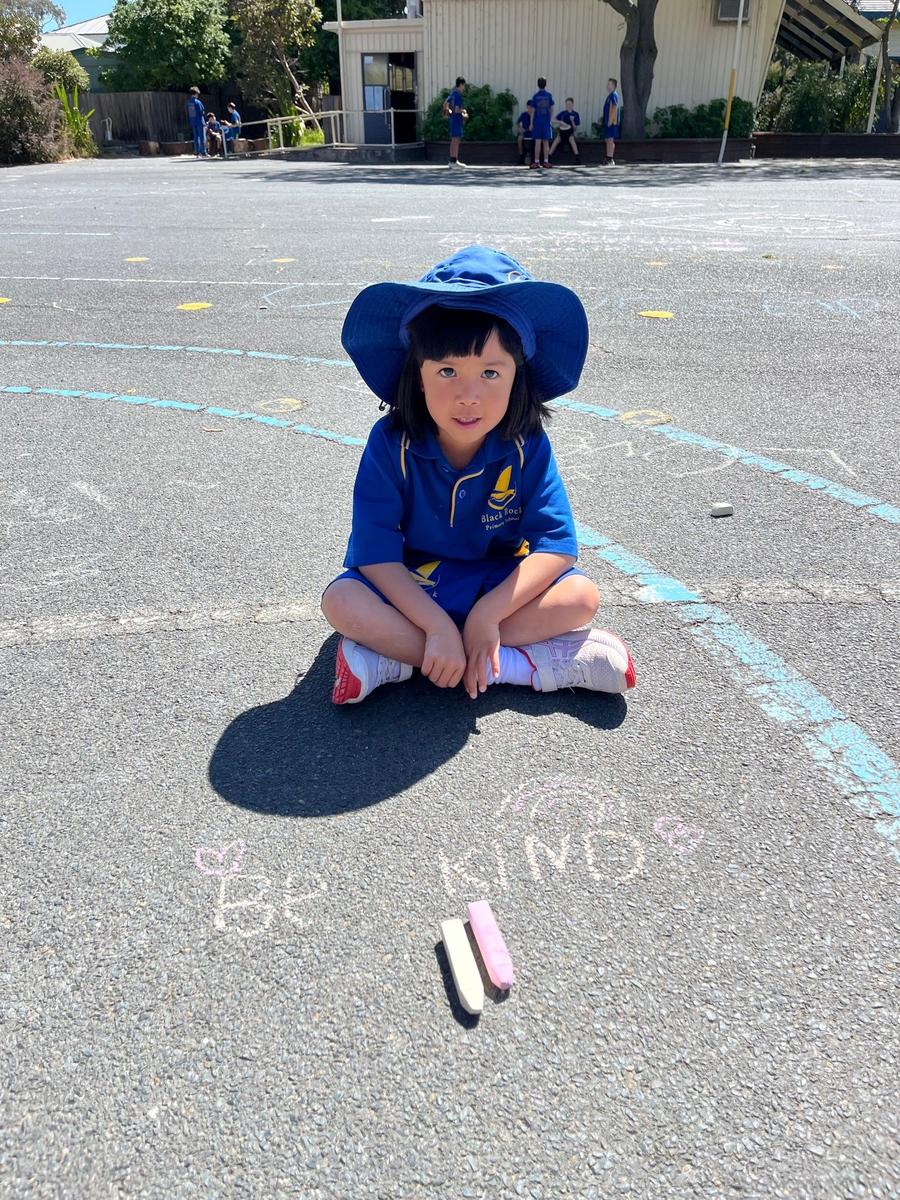Wellbeing @ BRPS

World Kindness Day
On November 13th, our school celebrated World Kindness Day. This is a global day that promotes the importance of being kind to each other, to yourself, and to the world.
The day was filled with a myriad of activities and initiatives that fostered a sense of compassion, empathy, and goodwill throughout the school community. One of the highlights of the day was when the students brainstormed kind words, phrases and images to write in chalk around the school. It was wonderful for students and our school community to be able to read these messages and engage in conversations about the importance of demonstrating kindness.
Teachers played a crucial role in fostering a kind and inclusive environment. Classroom activities focused on themes of empathy, understanding, and the importance of treating others with respect. Discussions about the significance of kindness resonated with the students, prompting them to reflect on their own behaviour and consider the feelings of those around them.
World Kindness Day served as a powerful reminder of the impact that kindness can have on individuals and communities.
Davina Dibbs
WELLBEING LEADER
Healthy Transitions
The end of the educational year brings changes, both big and small, for children, young people and adults.
Transitions are defined quite simply as change They are a period where we must adapt to new circumstances, expectations, people, environments or routines.
Potential challenges and stresses
Everyone reacts differently to change – some find it exciting, some find it stressful, some hardly notice it happened.
Research shows that transitions to a new learning environment is a time of potential challenge and stress for children, young people and their families. For some, it brings excitement about making friends and learning new things, while for others the change can leave them feeling nervous and overwhelmed. Some adjust quickly to their new school environment; others can take many months to adapt.
What we might observe during transitions
Children and young people often communicate their feelings through behaviour. They rely on the adults around them to understand, acknowledge and interpret their behaviour, and provide a safe, secure, predictable space for them.
Transitions are successful when children and young people feel confident, secure and included – and these are all important protective factors for children’s mental health and wellbeing.
It’s normal for children and young people to have strong feelings about an upcoming transition, such as excitement about the prospect of going to a new year level or school, as well as nervousness about what lies ahead. Many children and young people may also feel sad or angry about leaving their current learning environment and the positive relationships they’ve established with educators and each other. Common feelings children and young people have during transition can include:
· excitement
· sadness
· anger
· anticipation
· fear
· anxiety
Understanding and helping children and young people to handle the feelings will help to reduce their stress and can provide them with positive coping strategies. Children and young people often have difficulty explaining in words how they are feeling – instead they might show their feelings through their behaviour. Behaviours you might observe include: clinging behaviour, restlessness, withdrawal, anxiousness, refusal to comply, avoidance, planning and organisation difficulties, crying and tantrums, regression to younger behaviours, volatility.
Supporting transitions and building resilience
We build resilience by learning and developing social and emotional skills – including coping skills. With these skills we manage life stressors, grow confidence and willingness to try new things, and seek and accept help when required.
Helping your child transition to the next grade in primary school is an important aspect of their academic and personal development. Here are some tips for parents:
1. Start Early Discussions:
· Begin talking about the upcoming transition well in advance. Discuss what changes they can expect and highlight the positive aspects of moving to the next grade.
2. Maintain a Positive Attitude:
· Stay positive about the transition. Emphasize the exciting aspects of moving up a grade, such as new subjects, teachers, and opportunities for learning and growth.
3. Encourage Independence:
· Help your child develop skills that promote independence. Encourage them to organise their belongings, manage their time, and take responsibility for their homework.
4. Establish Consistent Routines:
· Consistent routines provide a sense of stability. Ensure that your child has a regular bedtime, a designated study time, and other routines that will remain consistent across grades.
5. Promote Social Skills:
· Reinforce the importance of making new friends and maintaining positive relationships. Discuss strategies for dealing with social challenges and encourage open communication.
6. Communicate with Teachers:
· Stay in regular communication with your child's teachers, ask about your child's progress, and discuss any concerns or questions you may have.
7. Celebrate Achievements:
· Acknowledge and celebrate your child's achievements, both big and small. This positive reinforcement can boost their confidence and motivation.
Michelle Guiliano
PSYCHOLOGIST


